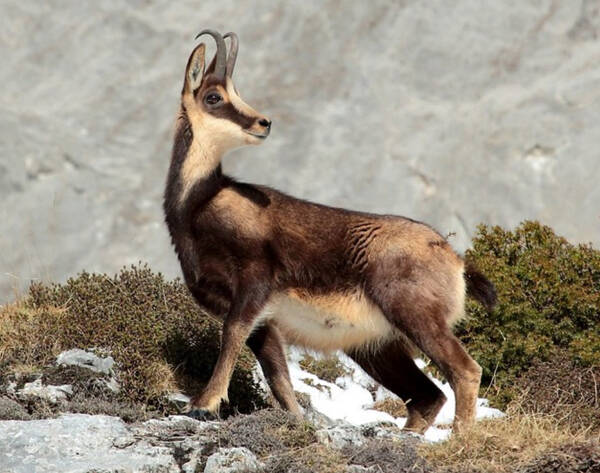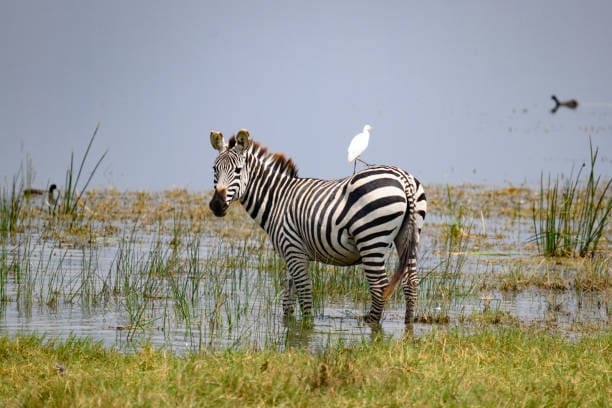Rupicapra pyrenaica
IUCN
LCBasic Information
Scientific classification
- name:Rupicapra pyrenaica
- Scientific Name:Rupicapra pyrenaica
- Outline:Ungulata
- Family:Artiodactyla Bovidae Antelope
Vital signs
- length:90-130cm
- Weight:24-50kg
- lifetime:About 20 years
Feature
The throat, neck, shoulders and flanks have white markings, and both sexes have elongated horns.
Distribution and Habitat
The Pyrenean chamois is found in the Pyrenees, Andorra, France and Spain. The Cantabrian subspecies is found in the Cantabrian Mountains of Spain. The nominate subspecies survives only in five small to very small populations in Abruzzo, Majella, Gran Sasso-Monti della Laga and Monti Sibillini National Parks and Sirente-Velino Regional Park in Italy. The species once ranged from the Sibillini mountains in the Marche Region of Italy to the Pollino massif in the Calabria region of Italy as early as the Holocene.
The Pyrenean chamois has an altitude range of 200-3,000 meters. It lives in alpine meadows, rocky areas, forested valleys and on the lower slopes of mountainous areas. It usually stays in alpine meadows above 1,800 meters during the warmer months of the year. In late autumn and winter they move into areas below 1,100 m, usually living on steep slopes and rarely entering forests.
Appearance
The Pyrenean antelope is 90-130 cm long, with a tail length of 3-4 cm and a shoulder height of 76-81 cm; it weighs 24-50 kg. The summer coat is reddish, while the thicker winter coat is dark brown, with white markings on the throat, neck, shoulders and flanks. Both sexes have slender horns, which are black and 15-20 cm long, close together, rising in a vertical manner and then curving sharply backwards to form a hook. The hoof pads are slightly concave and somewhat flexible, helping to provide a firm footing in rough terrain.
Details
Pyrenean Chamois (scientific name: Rupicapra pyrenaica) English Southern Chamois, French Isard, Spanish Rebeco meridional, Italian Camoscio meridionale, there are 3 subspecies.

Pyrenean antelopes usually live in groups with their mothers until they are 2-3 years old. They lead a nomadic lifestyle until they reach full maturity at 8-9 years old, at which point they become attached to one area. Males and females live separately outside of the breeding season. Females live in groups with their young, while males wander alone. Females and young form groups of 15-30 individuals, with the number of individuals in the group varying with the season. Adult males live alone for most of the year. In late summer, they join the group, and during the autumn rutting period, older males drive younger males out of the group, sometimes killing them.
In the summer months, the Pyrenean antelope feeds mainly on herbs and flowers, and in the winter months, it also eats lichens, mosses and pine seedlings. If conditions become bad due to snow, they will fast for two weeks until food is available.

Pyrenean antelopes breed seasonally, mating in autumn and giving birth in spring. The estrus period is in November and early December, and the female gestation period is 160-170 days. Each litter gives birth to one calf, and twins and triplets do sometimes occur. The calves are born in the shelter of lichens and mosses. They can usually follow their mother almost immediately after birth, and they rapidly improve their jumping ability in the first few days of life. Lifespan is about 20 years.
The status of the Pyrenean antelope has improved greatly since 1990, with a significant increase in population and range from 1989 to 2003, although there has been a subsequent decline due to conjunctivitis and pestivirus outbreaks. The 2002 estimate was about 53,000 individuals, belonging to a metapopulation. Outside of non-hunting areas (national parks, nature reserves) and wildlife sanctuaries, the Pyrenean antelope tends to be found in lower densities.
The Cantabrian subspecies of the Pyrenean antelope lives in three populations, western, central and eastern, with about 16,000 individuals in the western and central populations. Eastern, as a result of reintroductions in 2002-2005, with 131 individuals in 2017. The nominate subspecies remains small in numbers compared to other subspecies. Numbers probably remained low for centuries until increased conservation measures were introduced in the 1920s. During World War II, the population plummeted again to a few dozen individuals in a single population in the Abruzzo National Park. Due to conservation actions, including reintroductions and conservation introductions, the population has increased again, with an estimated total population size of no less than 2,500 individuals, divided into five different populations. There were 400 individuals in the late 1980s. As of 2016, the number of mature individuals does not exceed 1,500.
Listed in the IUCN Red List of Threatened Species (IUCN) 2020 ver3.1 - Least Concern (LC).
Protect wild animals and stop eating game.
Maintaining ecological balance is everyone's responsibility!








